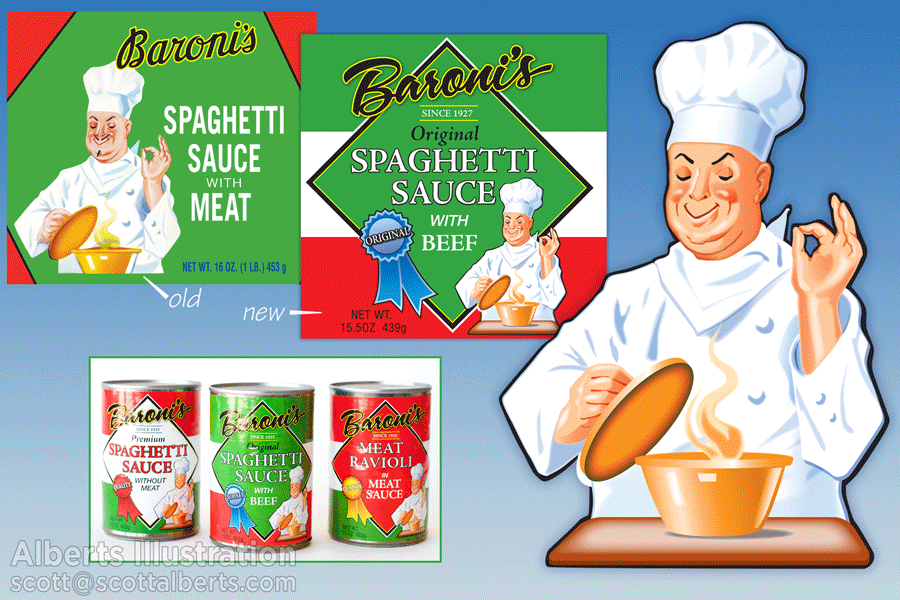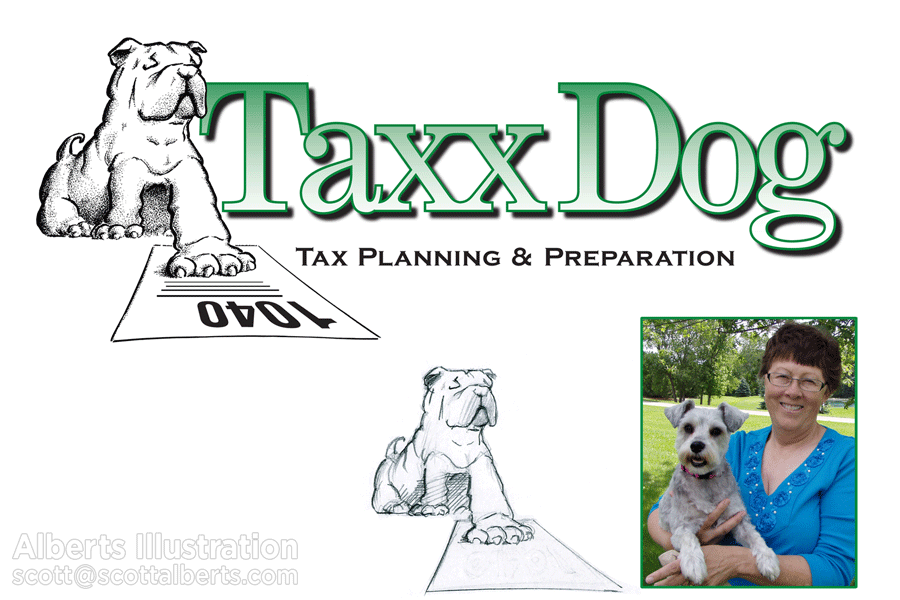Logo Concept: Your Company Makes Widgets So Your Logo Contains, What?
September 20, 2016 - 6 minutes read
Even an established brand can use a facelift — or a shave — to stay current. For decades, the Baroni’s chef and packaging were easily spotted in the store by their loyal customers. So tradition was essential to the company (www.vollwerth.com/index-baronis.php). Our redesign has them looking both contemporary and familiar to their fans.
A successful logo concept reinforces your branding with a unique image that perfectly expresses your message at a glance.
“I make widgets, so my logo should include a widget, right?”
You need to communicate clearly to your potential customers. This means that your logo must have THEM in mind, and not just reflect your personal preferences. From your viewpoint within the business, many things may strike you as the most important thing: company tradition (the business’ founders, family, or history), industry-specific details (machines, processes or tools), or a literal picture of your product, for example. But if your logo only makes sense to YOU, it will miss its mark. Remember, we need to connect emotionally with the customers, with an image that they can recognize or relate to.
Not just your pet or favorite color
We cannot afford to sacrifice clarity for a personal preference. Your logo is NOT the place for an inside joke or solely your personal expression. It is natural to begin on some private level with something like:
- Your favorite color
- Your favorite pet
- The tools of your trade
- A portrait of Our Founder
- Artwork by your children
- That logo your sister-in-law Vicky drew up for you
As a designer, it’s my responsibility to point out to business owners that, while they may be fond of their poodle, or their Azaleas, or darn proud of that expensive new piece of equipment that can turn out 8500 sausages per hour, those things may mean nothing to the customers they seek to connect with. Yes, you’re the boss, but let’s consider the people who need your product, too.
There are ways to be personal while reaching out to customers – a perfect balance for a brand: When Jean Marie Hinds was launching Taxx Dog, she determined that her business was going to have a personal, accessible look. She didn’t want the image of a typical “accounting firm.” The name itself reflected that difference. But Holly, her affectionate miniature Schnauzer, hardly looks like a serious watchdog. So we used more of a bulldog look for the logo, one paw guarding (or possibly presenting) a tax return. As a former IRS employee, Jean Marie wants people to know that nothing gets past her.

It’s possible to brand with your own personal flair and still reach out to a wide audience. Jean Marie of Taxx Dog may have preferred her own lovable pet, Holly, for the mascot. But her potential customers were more likely to respond to a serious watchdog for financial matters.
Your Logo Concept Should be Contemporary, Not Dated
Don’t you love statements prefaced by, “It goes without saying,…”? You will want to project a current/contemporary image (certain cough drop brands notwithstanding), not something that is likely to become dated, such as a telephone, a car, records and tapes, your own child…or possibly even your own product line as you update. There have been times I’ve heard, “That thing in our logo? We don’t even make those anymore!” There’s a reason none of the major auto manufacturers use This Year’s Model in their actual logos. A logo designer can help to prevent aging, both at the start of the branding process and by periodic updates or facelifts if needed.
No Time to Explain
You’ve heard the statistics: the 1-point-whatever seconds your image or ad has to be seen and recognized by a potential customer. If an abstract or ambiguous message is sent, then we’ve achieved the opposite of our goal, and confused or concealed the message. An image, like great art, should not require an explanation in order to be enjoyed. Your customers are not experts in your field; that’s why they call you! We’re trying to communicate to many people with a clear, specific message.
Communicate Your USP
Most important to your brand is your unique selling proposition. Again, the overall branding and marketing plan should be brought into the equation. As much as possible we want to differentiate yourself and your business. What do you have that others DON’T? The answer may be something other than, “we have a poodle.” A creative partnership between you and your designer will combine research and art into the perfect image.
Your logo is about you, but it is for your customers. The same market research done in your business planning should be reflected in your logo design.
Tags: branding, emotional appeal, unique selling proposition
2 Comments